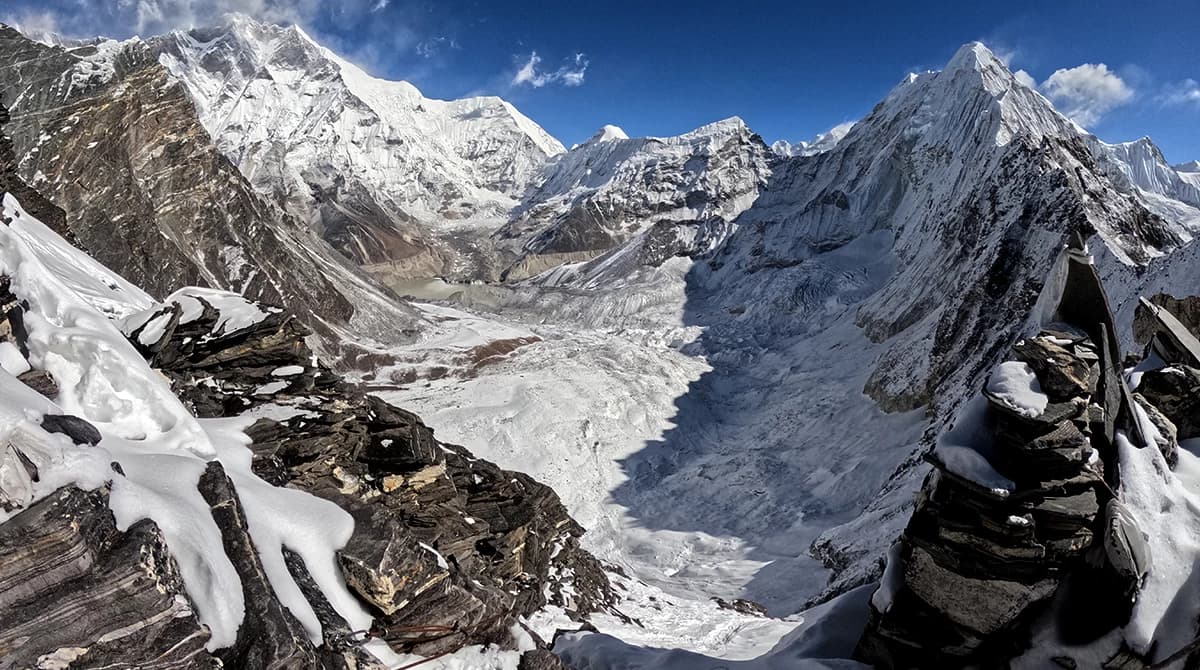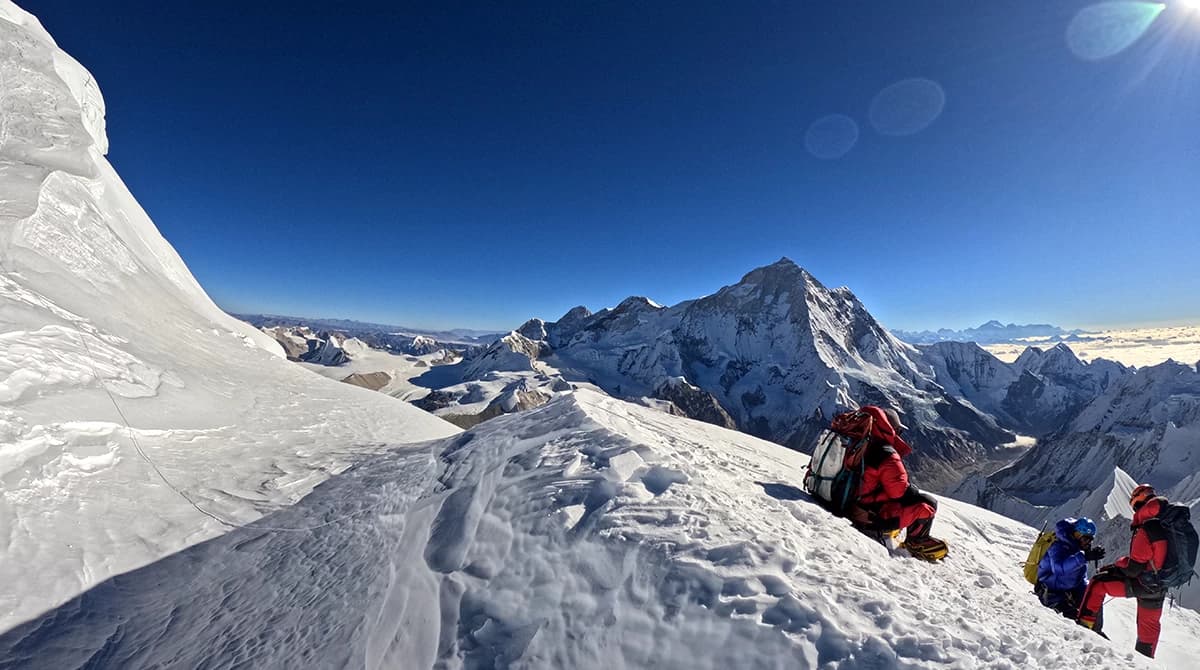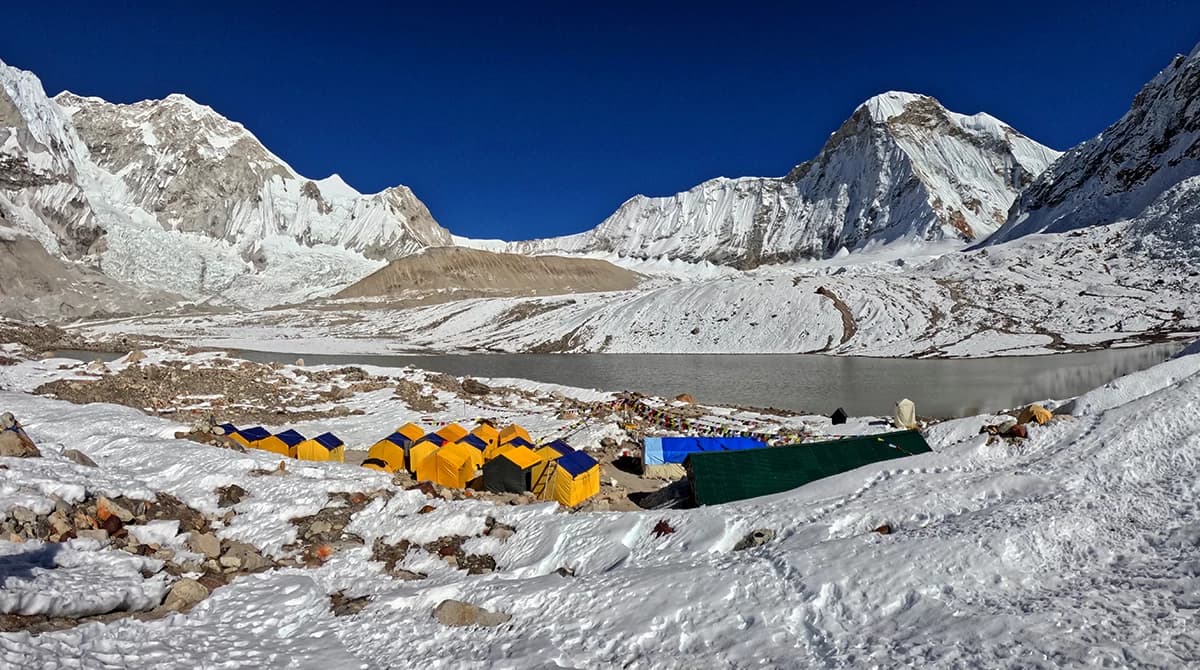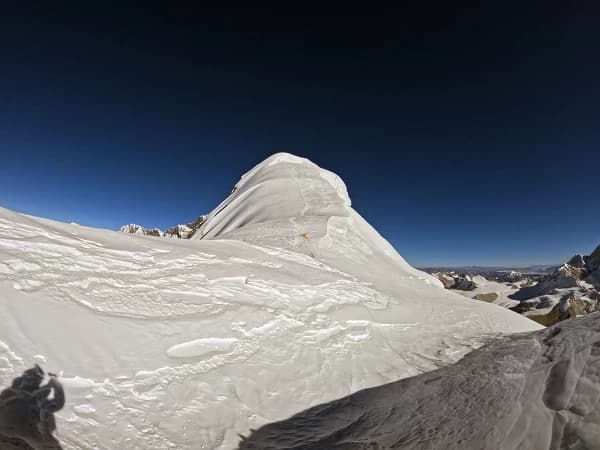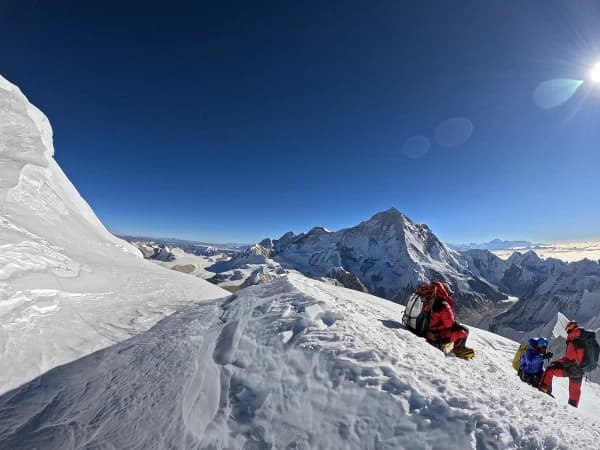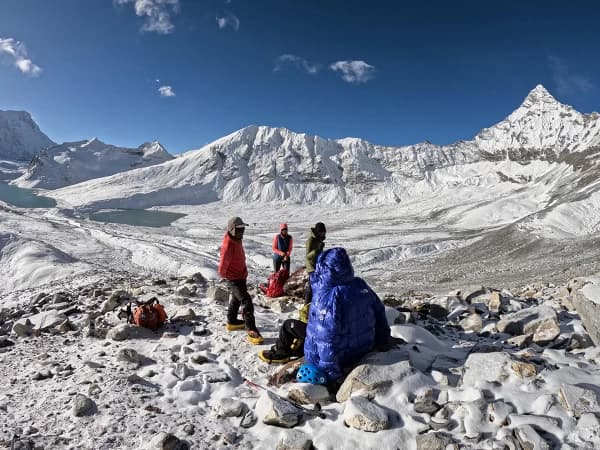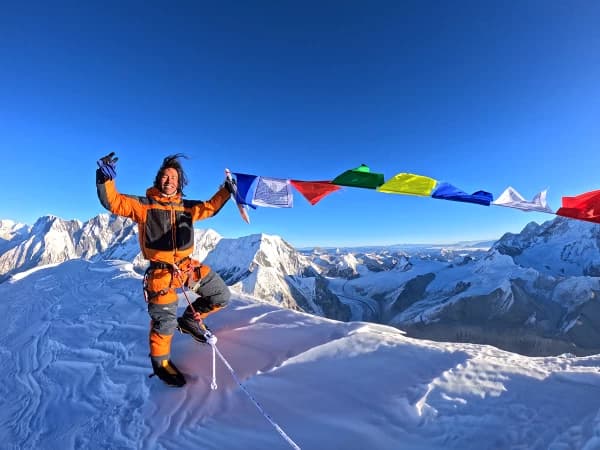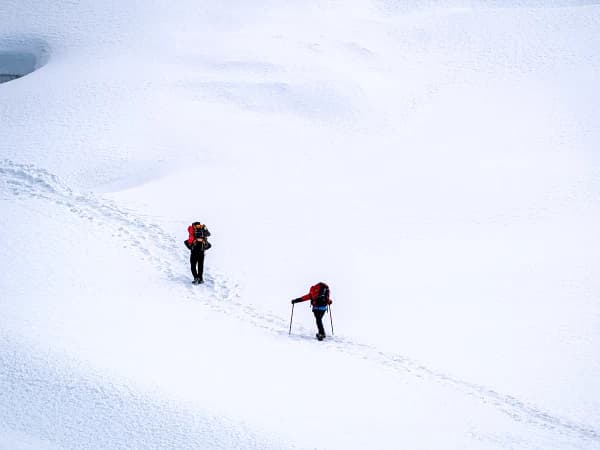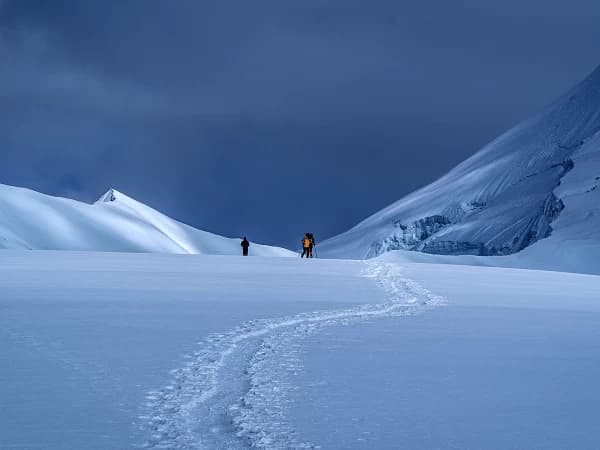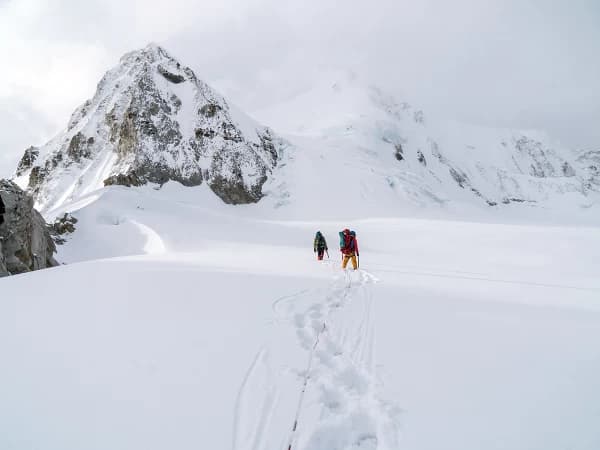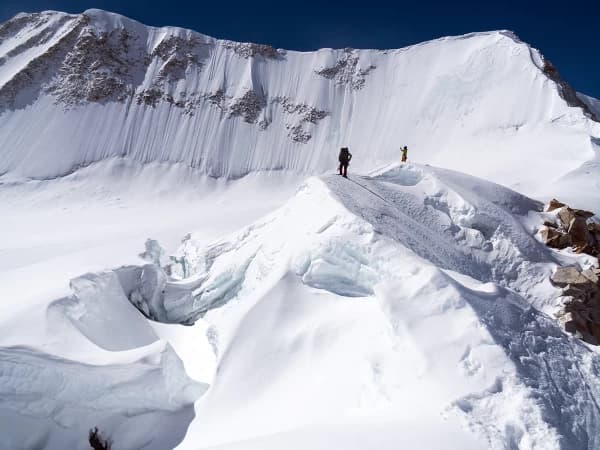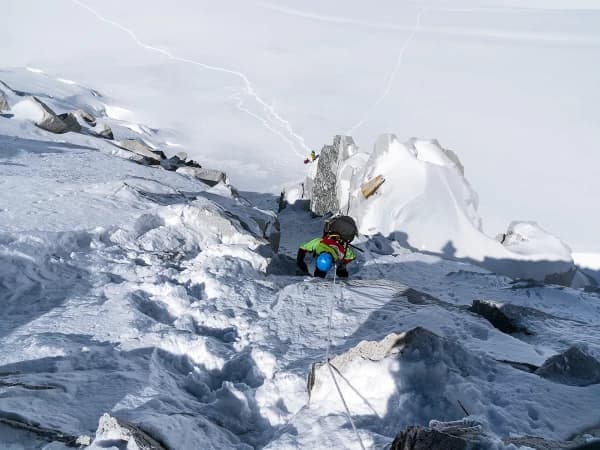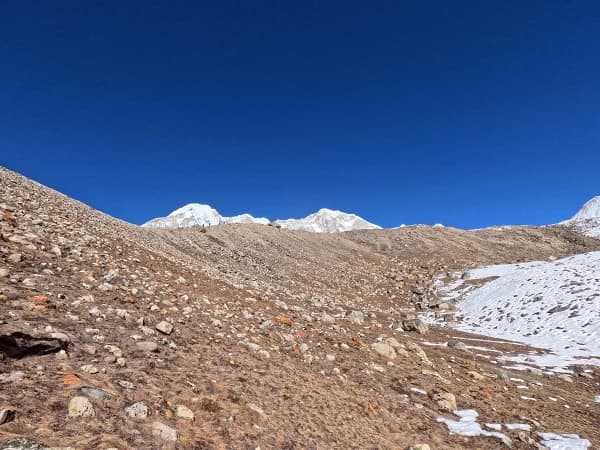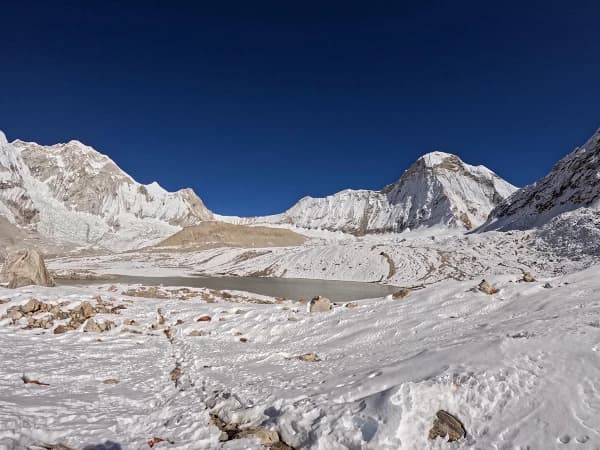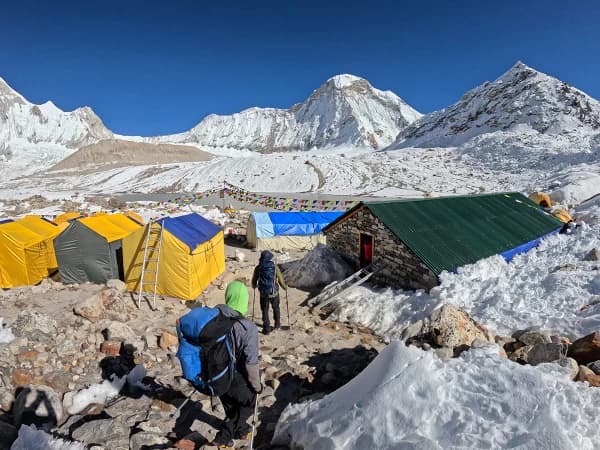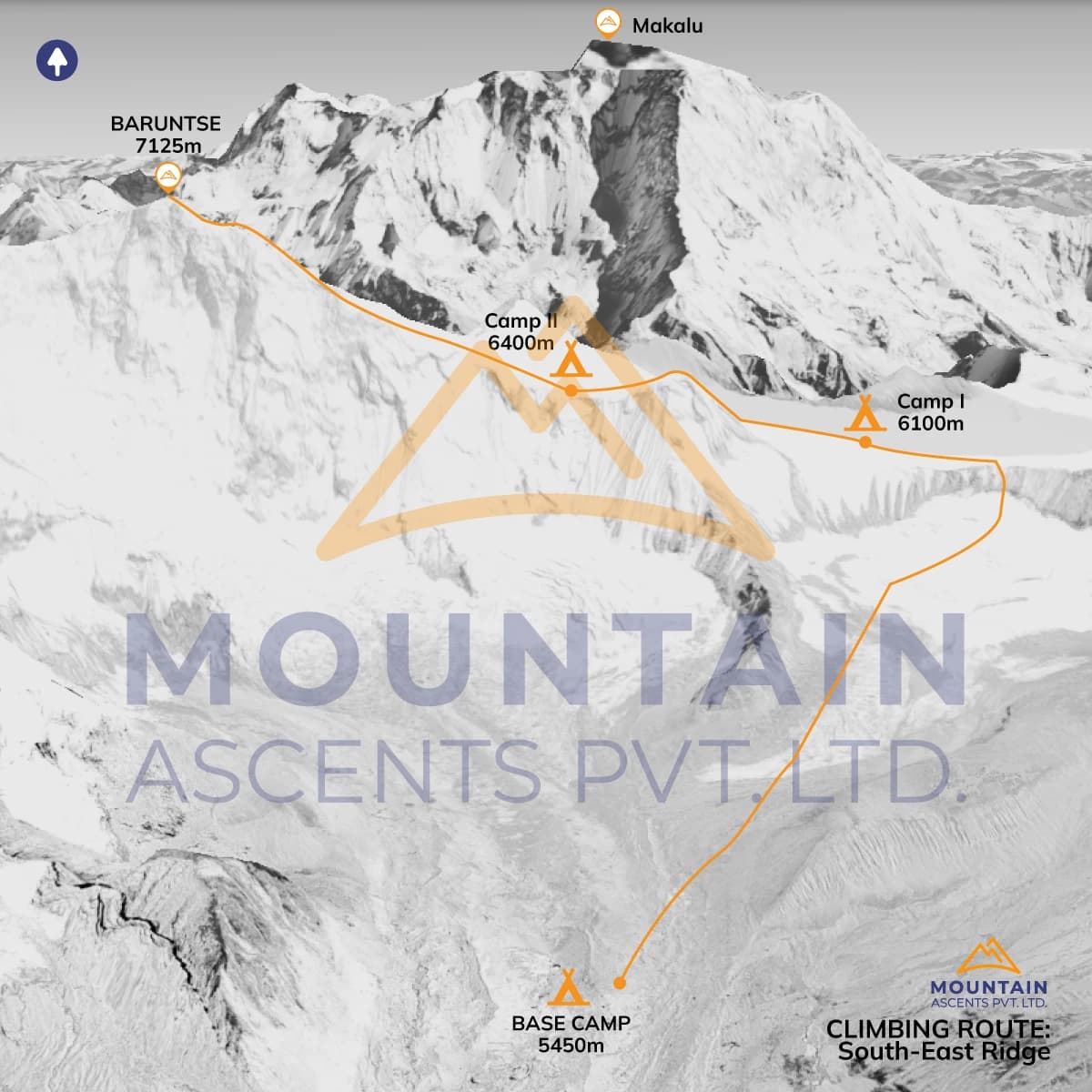The Baruntse Expedition is an exhilarating climb to the summit of one of the most amazing peaks in the Nepalese Himalayas, Baruntse within the Makalu and Everest regions, near the Barun Glacier. The peak is renowned for its aesthetic beauty and technical challenges, a haven for season climbers looking for practice ground before finally heading to eight-thousanders such as Everest (8,848 m), the peak of the world, and Makalu (8,485 m).
Located in the rugged beauty of the Honku Valley, this expedition promises an adrenaline-rushing climb to the top of Baruntse 7,129 meters (23,464 feet) towards the south-east of Everest, west of Makalu, east of Amadablam, and north of Chamlang as you trek through the stunning landscape. Typically beginning with a mountain flight to the Everest Trekking region, Lukla, after several days of acclimatization in Kathmandu Valley, you will be surrounded by some of the world’s most iconic peaks, including Everest, Nuptse, Makalu, Chamlang, Kyashar, Kusum Kanguru, Mera Peak, and so on.
The journey offers a potential encounter with the elusive snow leopard (if lucky), the playful red panda, and the hardy mountain thar, amidst a backdrop of lush flora including maple, Chir pine, oak, and vibrant rhododendron blooms. Requires 5-7 hours of exploration, including expertise in ice and snow slopes, roped travel, and crampon usage, especially after the beginning of the climbing section, though the summit is rated technical and challenging, it is accessible and offers a deep cultural immersion as well.
Therefore, the Himalayan expedition to Baruntse is a golden opportunity to explore and discover the pristine wilderness, and culture, and marvel at the awe-inspiring beauty of the Himalayas traversing along the Hinku and Honku Valley, Mera La, and Makalu Barun National Park, offering an ideal training for 8000-meter peak summits that also includes camping under the starry sky.
Trip Highlights
- Stroll around the cultural, religious, and historically significant UNESCO World Heritage sites in the Kathmandu Valley.
- Experience a scenically profound mountain flight to and from Lukla, the gateway to Nepal's Everest region.
- Embark on an epic Himalayan route to Baruntse Peak.
- Unveil the beauty and serenity of hidden treasures in the Sagarmatha National Park and the Makalu Barun National Park.
- Venture deep into the traditional Himalayan villages that still retain the ancient way of life, culture, and traditions of the Honku and Hinku Valleys.
- Catch striking views of the snowcapped mountain ranges like never before, including those of Everest, Nuptse, Makalu, Chamlang, Kyashar, Kusum Kanguru, Mera Peak, and others.
- Make your way through the adventurous Zatrawa La Pass and the stunning Khumbu Valley.
- The serene camping experience at Baruntse Base Camp and other high camps eventually led to Baruntse Peak.
- On your lucky day, capture glimpses of some of the rarest Himalayan wildlife species, such as the Himalayan black bear, red panda, colorful pheasants, and others.
- Last but not least, conquer the Baruntse Peak at an altitude of 7,129. m above sea level, leaving you with an immeasurable sense of achievement, tranquility, and many more.
What makes the Bartunse Climbing journey special?
Ascent at first by the British team led by Tong Streather, Chris Boningten, and Joe Brown in 1955 A.D., Mount Baruntse is a pure alpine climbing excursion in the Khumbu region of Nepal in the remote location famous for its lengthy ascent.
The expedition features some of the best technical rock and ice portions, offering stunning views of Nepalese Himalayas, comparatively less traveled paths, and Sherpa villages. The journey is both challenging and memorable and can be approached from the east and west ridges as well, other than the standard South Col Route.
In essence, the Bartunse climbing journey is extremely special due to its perfect blend of adrenaline-rushing challenges that may even resemble those of eight-thousanders like Mt. Everest (8,848 m), Cho Oyu (8,188 m), Makalu (8,485 m), and others. Nonetheless, you can always expect an unforgettable adventure of a lifetime, as assured by:
Trekking through the remote valleys and summit the less explored peak
The expedition to Baruntse is through the remote Hinku Valley before you finally make it to the top of the peak. For several days you will trek through the pristine landscapes, isolated Sherpa villages, and spectacular alpine terrain. The journey also passes by dense forests of oak, pine, and rhododendron, home to a diverse range of Himalayan wildlife such as the Himalayan thar, the Himalayan black bear, the red panda, and others that you can come across on a lucky day.
Since the climb to Baruntse summit itself is a mix of challenging ice and snow slopes, acclimatization is an integral part of the expedition to mitigate the risk of acute mountain sickness (AMS) or altitude sickness, which is a common occurrence in the higher Himalayas, such as in Baruntse; therefore, the Himalayan voyage also includes ample of acclimatization days at various points along the trek to adjust to the high altitude, generally around Khote and Thangnak villages.
Similarly, unlike more commercialized peaks like Island Peak or Mera Peak, Bartunse receives a comparatively lesser number of visitors, offering a profound sense of solitude, adventure, and peaceful climbing experience, making it a fantastic choice for those seeking a chance to explore a pristine, untouched, and unique Himalayan expedition.
Gorgeous Himalayan ranges throughout the journey
Not only from the summit of Bartunse, trekkers, climbers, and expeditors alike are presented with stunning 360-degree views of iconic Himalayan peaks including Mt. Everest, Makalu, Lhotse, Ama Dablam, Cho Oyu, and others throughout the journey. During the entire expedition to Baruntse involving making way through epic national park areas of the country, you will be surrounded by the awe-inspiring peaks perched deep into the sky and are to die for.
These snow-capped mountain ranges appear more refined from several vantage points and high Himalayan mountain passes, such as Zatrawa La Pass at an altitude of 4,610 m/15,126 ft and Amphu Lampcha Pass at 5,845 m/19,177 ft above sea level, along with Baruntse Base Camp (5,400 m/17717 ft) and the Baruntse peak (7,129 m) at the serene Himalayan atmosphere, letting you seize the utmost serenity and visual feast at the same time.
Adventure in the remote wilderness of Zatrawa La Pass, High Base Camps, and Amphu Lapcha Pass
The Baruntse climbing journey amidst two of the alluring Himalayan regions of Nepal, the Everest Trekking region and the Makalu Barun, involves crossing Zatrawa La Pass at 4,610 m that gradually progresses through the Bartunse Base Camp and high camps to conquer the summit peak itself.
Naturally, it would not be easy to make way through untamed wilderness, which consists of rugged, technical, and steep ascents cornered by Himalayan giants, crevasses, glaciers, and often icy and snowy slopes demanding some technical skills on the use of fixed ropes and other climbing gear and equipment.
Likewise, the Himalayan Odyssey to Baruntse also involves crossing the physically and mentally demanding Amphu Lapcha Pass connecting the Hinku Valley to the Khumbu Valley, crafting the climb more than just a peak expedition offering breathtaking views and a true sense of isolation witnessing the unspoiled green valleys, cascading waterfalls, and pristine landscapes in contrast to the completely whitewashed mountain above.
The rich unique Sherpa Culture
Before you begin the summit ascent to Baruntse, the expedition embarks through the traditional villages and valleys in the Everest Himalayan region, called Hinku and Khumbu, predominated largely by the Sherpa people, renowned for their resilience and deep connection to the mountains.
Sherpas are one of the indigenous communities of Nepal, locals to the Himalayas, sharing cultural and religious ties to Tibetan Buddhism. They possess distinctive ways of life, culture, traditions, cultural attire, and languages that they have been practicing for centuries.
It would be enlightening to capture an insider insight into the lives of these Himalayan locals as you spend nights in the tea houses and local lodges opened and managed by Sherpas, along with visits to several monasteries, mani walls, and gompas set against the mountain backdrop, usually adorned with colorful prayer flags fluttering in the crispy wind.
This rich cultural immersion as you get to interact with Sherpa people, otherwise called the tigers of the snow for their superhuman-like adaptability to the high altitude and visiting cultural heritages en route, adds much to the spirituality and cultural layer to the Barunste adventure.
A transformative summit push to Mt. Baruntse
Undoubtedly, the Baruntse summit push is the major highlight, which itself is an extraordinary adventure that particularly might not be for beginners demanding strong physical and mental conditioning, technical skills, and adequate acclimatization.
The ascent from base camp to the summit is a series of combination climbing over steep ice, slopes, ridges, and snow-covered ridges in thin air; therefore, it begins at dawn to avoid the afternoon wind. Anticipate to push yourself beyond what you thought your limitation was and swift change in the Himalayan weather.
Therefore, it is a must that you are well aware of the use of crampons, ice axes, ropes, altitude sickness, and prevention methods and well prepared for frequently changing weather conditions, fostering mental resilience, personal growth, and connection to nature and oneself as you successfully mark the victory over Baruntse, rewarding you with unparalleled heavenly sights of the surrounding peaks.
35-Day itinerary: The Best Route for Baruntse Expedition
Yes, though with experts of the fields with years of extensive expertise in organizing and operating tours, treks, and expeditions not only in Nepal but also in several Himalayan countries, including Tibet and Bhutan, Mountain Ascents, you can customize the Barunste expedition as per your need, preferences, and time; the 35-day one stands out as the best one.
Beginning traditionally with a scenic flight to Lukla, the 35-day itinerary allocates several buffer days for acclimatization so that your body gets to adapt properly to the high altitude, full exploration and discovery the Himalayan summit route to Baruntse has to offer, and equal amount of adventure and technical challenge, including Zatrawa La and Amaphu Lapcha Pass.
This route grants you a gradual ascent without having to rush the pace. In addition, it also allows much-needed several days of rest and acclimatization, a key component to a successful summit, ensuring climbers' safety and well-being, followed by heartwarming Sherpa cultural and varying yet stunning landscapes of both the Hinku and Khumbu Valleys.
Further, days 12-26 are designated only for climbing considering the fluctuating Himalayan weather and its wrath, which also includes several training days to overcome potential hazards and learn technical skills and methods essential for victory over one of the technical mountains of Nepal.
To conclude, the 35-day itinerary for Baruntse offers the best chance of success, primarily focusing on plentiful acclimatization, safety, skill development, strategic rest, technical training, flexibility for weather, and well-sorted logistical support, promising enhanced experience; hence, it is considered the best route.
35-Days Baruntse Expedition Cost for 2025/2026
It is no wonder that the final price for Baruntse Expedition for 2025/2026 varies significantly depending on the company (local or international), group size, service inclusion and exclusion, and personal spending habits. Usually separating USD 8,000 to USD 12,000 per person is a good choice, including that of the entire team.
This comprehensive Baruntse Summit Package cost generally covers expenses for most of the essential requirements for an adventurous and smooth journey to the Nepalese Himalayas, including daily meals, accommodation, guides, porters, their salary, travel insurance, permits, and necessary climbing gear and equipment for your Nepalese staff.
Further, contact us at Moutain Ascents for more affordable and budget-friendly options with zero compromise to your safety, satisfaction, and key features of the route!
